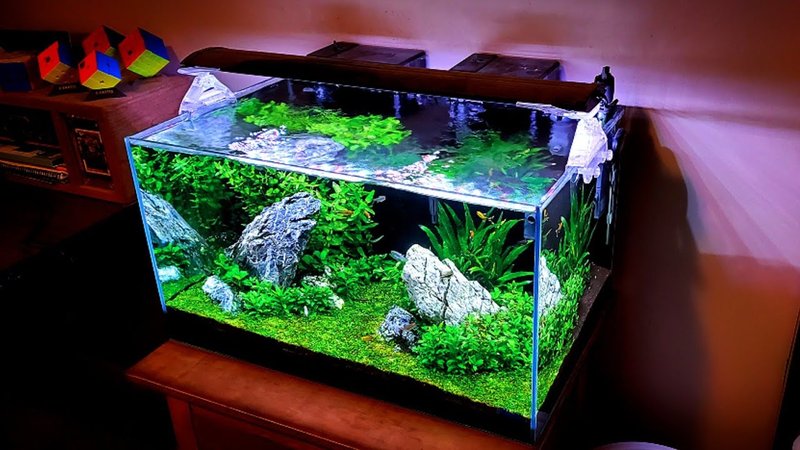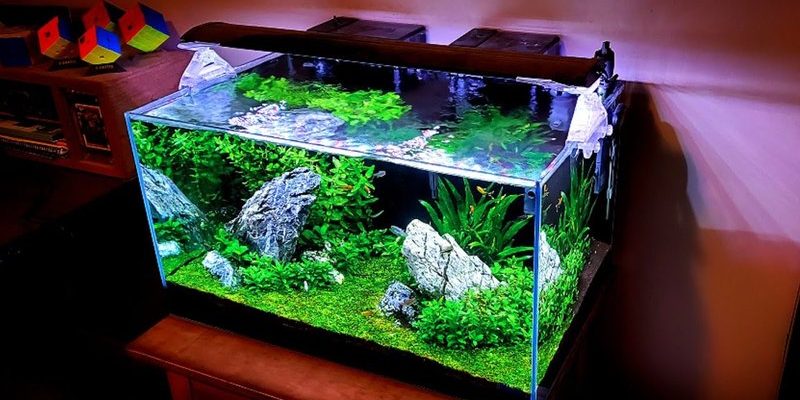
Platies, known for their friendly nature and vibrant colors, are a fantastic choice for both beginners and experienced aquarists. But to really bring out their beauty and ensure their health, you need to choose the right plants and substrate. Think of it like baking a cake: you need the right ingredients to make it delicious. In this case, your ingredients are plants that offer shelter and substrate that provides a solid base for your underwater garden.
Why Plants Matter in a Platy Tank
Plants are more than just decorations in your platy tank. They serve several essential functions that contribute to your fish’s well-being. First and foremost, they provide hiding spots and resting areas for platies, which can help reduce stress. After all, even the friendliest fish need a break sometimes!
Additionally, live plants improve water quality by absorbing harmful substances like nitrates and phosphates. They also produce oxygen during the day, which is vital for the health of your fish. When deciding on plants, consider both their beauty and their function. It’s like finding a beautiful sofa that’s also super comfy—it’s just better when things serve a purpose.
In terms of aesthetics, plants can create a vibrant, lush environment that mimics the natural habitats of platies. A well-planted tank not only looks good but also enhances the overall health of your aquarium. So, how do you choose the right plants for your tank? Let’s dive into that.
Best Plants for Platy Tanks
When selecting plants for your platy tank, it’s crucial to pick ones that can thrive in a community setting. Some excellent options include:
- Java Fern: This hardy plant can grow in a variety of conditions and doesn’t require substrate to thrive. Just attach it to driftwood or rocks, and it can flourish.
- Hornwort: A fast-growing plant that helps oxygenate the water, hornwort floats on the surface or can be anchored in the substrate. Plus, it provides excellent cover for fry.
- Water Wisteria: This plant grows quickly and can be trimmed to maintain size. It offers plenty of hiding places and absorbs excess nutrients, helping prevent algae growth.
- Anubias: These hardy plants have thick leaves and can survive in low light. They grow slowly, making them easy to maintain, and they can be attached to decor.
- Cryptocoryne: A great choice for beginners, these plants come in various shapes and sizes and can thrive in different lighting conditions.
These plants not only enhance your tank’s beauty but also create a healthier environment for your platies. They offer hiding spots and contribute to the overall ecosystem of your aquarium.
Choosing the Right Substrate for Platy Tanks
Substrate is the foundation of your platy tank, and choosing the right type is essential for plant growth and fish health. Here are a few popular substrate options:
- Gravel: Commonly used in many aquariums, gravel is easy to clean and provides good drainage for plants’ roots. It’s available in various colors, allowing you to customize your tank’s look.
- Sand: If you prefer a more natural look, sand can be a great choice. It’s gentle on fish and allows plants to root well, although it might require more frequent cleaning.
- Soil-based Substrates: These are fantastic for planted tanks as they contain nutrients that support plant growth. However, they can be messy to set up and may cloud the water initially.
- Laterite: This substrate is rich in iron and provides essential nutrients for plant roots. It works best under a layer of gravel for an ideal planting environment.
When deciding on substrate, think about what will work best for your plants and fish. Each type has its pros and cons, and it may also depend on how you envision your tank looking.
How to Set Up Plants in Your Platy Tank
Now that you’ve chosen your plants and substrate, let’s talk about how to set them up together. Here’s a simple step-by-step guide to planting in your platy tank:
1. Prepare Your Substrate: Rinse your chosen substrate thoroughly to remove dust and debris. This helps keep your water clear and clean. If you’re using soil-based substrate, it’s a good idea to layer it beneath gravel or sand.
2. Add Water: Fill your tank with water, but be gentle to avoid disturbing the substrate too much. Use a plate or bowl turned upside down to deflect the water flow if needed.
3. Plant Your Greens: Start with the tallest plants at the back and shorter ones at the front. Make small holes in the substrate and gently place the roots in, then cover them up lightly. Be careful not to bury the stems of the plants.
4. Arrange Your Decor: If you have rocks or driftwood, add those after planting. They can provide additional hiding spots and help create a natural look.
5. Cycle Your Tank: Before adding your platies, let the tank cycle for a few weeks. This allows beneficial bacteria to establish and will help keep your water quality high.
Setting up your tank properly will make a significant difference in your fish’s happiness and your enjoyment as an aquarist. It’s all about patience and setting the stage before introducing your platies.
Maintaining the Plants and Substrate
Once your tank is set up, maintaining it is crucial to keep everything healthy. Here’s what you need to know about caring for your plants and substrate:
– Light: Most aquatic plants need moderate to high light to thrive. Depending on your plant choices, consider using LED grow lights to simulate sunlight and encourage growth.
– Fertilization: While some substrates provide nutrients, you may also need to use fertilizers to support plant health. Look for liquid fertilizers or nutrient sticks designed for planted tanks.
– Regular Water Changes: Regularly changing about 10-20% of your tank’s water is essential. This helps remove toxins and replenish nutrients, keeping both your plants and fish healthy.
– Trimming and Cleaning: Keep an eye on your plants; trim any dead or brown leaves to promote new growth. Also, regularly clean the substrate to prevent detritus buildup.
Maintaining a platy tank can be a rewarding experience. With the right care, your plants will flourish, and your platies will thrive in their vibrant underwater ecosystem.
Common Issues and Troubleshooting
Even with the best setup, you might run into some challenges along the way. Here are a few common issues to watch for and how to tackle them:
– Algae Growth: If you notice algae taking over, it might mean your tank has too much light or nutrients. Try reducing the light duration and checking your fertilization schedule.
– Plants Wilting: If your plants look sad or are wilting, they may need more nutrients or light. Look into your fertilizer routine or reposition them to get better light.
– Fish Stress: If your platies seem stressed or are hiding too much, check your water parameters. Make sure you’re not overstocked or that aggressive fish aren’t causing issues.
Here’s the thing: every aquarium is a bit different, and part of the fun is figuring out what works best for yours. Pay attention to your fish and plants, and you’ll get to know what they need over time.
Creating a vibrant and dynamic platy tank isn’t just about putting water and fish together; it’s about establishing a thriving ecosystem. By selecting the right plants and substrate, you set the stage for your platies to live happily and healthily. Whether you go for hardy Java Ferns or beautiful Water Wisteria, the right choices will enrich your aquarium experience.
You might find that maintaining the tank becomes a rewarding hobby, as you watch your plants grow and your fish flourish. Just remember, it’s all about patience, observation, and a bit of love. So, roll up your sleeves, dive in, and enjoy the colorful world you’re creating!

